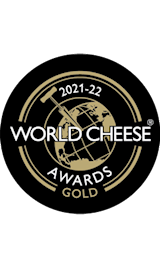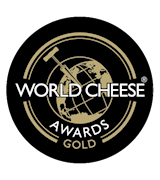Best Franc-Comtois Foods
Comté is a big, hard cheese made from unpasteurized cow's milk, with at least 45% fat and a pressed, cooked paste. Each cheese wheel is unique with numerous taste varieties that can range from milky, spicy, roasted to fruity, buttery or plant-like due to the fact the milk it is made from must be used immediately.
It is made in the Jura massif in the caves of Doubs, Jura and Haute-Saône departments in France. The maturation period lasts at least 120 days and it is turned and scrubbed regularly during the process. Comté also has a seasonal stamp, like winter, summer, mountain Comté or plains Comté.
Also known as Vacherin du Haut-Doubs, Mont d'Or is a soft cheese made from raw cow's milk in the Haut-Doubs region in France. What's unique about Mont d'Or's visual appearance is that it is encircled by spruce bark strips and packaged in a spruce wooden box that keeps the cheese in place.
It has a full, rich, sweet and grassy flavor and a slightly acidic taste. Its rind is not edible like in most other French cheeses, so it has to be removed to get to the creamy, runny, almost liquid inside, when fully ripe. As the cheese is already almost melting, it can be eaten like a fondue and enjoyed with sparkling wines.
Pair with
OTHER VARIATIONS OF Vacherin
MAIN INGREDIENTS
This is another one of those centuries-old dishes that were invented as a practical way to use old cheese and old bread. In this case, the dish is called fondue jurassienne. The star of this fondue is Comté cheese, a staple in the Jura and Franche-Comté regions.
To make this cheesy fondue, highly acidic white wine is first warmed in a pan or a pot, and it is then combined with a combination of Comté cheese and cornflour until it is thoroughly combined with the wine. Kirsch, salt, and pepper are added to the whole combination, which is then transferred to a well-warmed, garlic-rubbed fondue pot set over a flame.
OTHER VARIATIONS OF Fondue
Morbier is a soft cheese made from unpasteurized cow's milk, produced in the French regions of Doubs, Jura, Ain, and Saône-et-Loire. The cheese is more than two centuries old. It is easily identifiable for its thin black layer of ash which goes through the center of the cheese.
For full maturation, it takes from 45 days to 3 months, and in that time the rind becomes yellow and moist. The flavor is rich and creamy, reminiscent of fresh hay, nuts and fruits, with a slightly bitter aftertaste. Morbier also has numerous small holes dispersed throughout its body.
Cancoillotte is a French cheese originating from the region of Franche-Comté. It is believed that this cow’s milk cheese with a thick and creamy texture first appeared more than 2,000 years ago in a region that was then called Séquanie – known nowadays as Haute-Saône.
Originally, the cheese was called fromage fondu (melted cheese) and fromage de femme (housewife’s cheese). The flavor of cancoillotte can best be described as acidic and buttery, with a strong fermented odor. It is recommended to heat it up with butter, wine, and garlic, then pour the combination over vegetables, cold cuts, or potatoes.
MAIN INGREDIENTS
Along with coq au Riesling, coq au vin jaune is another variation on the classic coq au vin. Instead of red wine, coq au vin jaune incorporates yellow or white wine. The best vin jaune is found in the French region of Jura, but any yellow or white wine can be used instead of it.
Light and sweet flavors and various colors make it a great summer dish, although the classic coq au vin is considered a typical winter dish. Morel mushrooms are commonly used in the preparation of coq au vin jaune, giving it a unique flavor and aroma.
MAIN INGREDIENTS
Croûte aux morilles is a traditional dish from the French region of Franche-Comté. It consists of a piece of toasted bread paired with morel mushrooms in a creamy sauce. Sometimes, the dish is served in a puff pastry casing. It is best to consume croûte aux morilles in April or May, as it is the time of year when mushrooms are the most abundant in the Franche-Comté forests.
Traditionally, the dish is accompanied by young white wines from the Jura region.
Saucisse de Morteau is a traditional smoked sausage made from pork meat that is stuffed into a natural pork intestine casing. It is produced in the Franche-Comté region in France, where the locals are experts in smoking the sausages in numerous traditional smokehouses throughout the region.
The pigs are ethically and sustainably reared, and fattened in a traditional manner, without forcing the animals. The sausage is slowly smoked over beech wood, where it develops its firm, tender, and smooth texture, along with the typical meaty and smoky flavor that is well balanced without being bitter or too intense.
MAIN INGREDIENTS
Gâteau de ménage or household cake is a traditional, simple cake originating from the French region of Franche-Comté. It is a type of flat, round brioche that is topped with chocolate chips or egg cream known as goumeau.
This tasty dessert is sometimes also referred to as birthday cake. It was invented by the Der á Montier-en-Der monks in the Middle Ages and it is still popular today, especially during the festival season and Christmas fairs.
Mamirolle is a semi-soft cheese made from pasteurized cow's milk that was first made in 1935 by students of the Ecole Nationale d'Industrie Laitiere in Mamirolle, France, hence the name. In 1996, the Éco-Délices dairy in Plessisville, Quebec also got the exclusive license to produce the cheese outside France.
Underneath Mamirolle's washed rind, the texture is supple, elastic, and chewy. The aromas are earthy and pungent, while the flavors are mild, fruity, salty, and sweet, with a rich buttery finish. The cheese is left to age from 3 to 4 weeks on wooden planks, and during the process it's washed with annatto.
Pair with
Best Franc-Comtois Food Producers
The Petite family has been involved in cheesemaking in the Jura Mountains since that time. In 1934, Marcel Petite expanded the family tradition by becoming an affineur, maturing and selling cheeses sourced from local fruitières. Today, the establishment offers a curated selection of traditional raw milk cheeses, including their renowned Comté, Morbier, Bleu de Gex, Mont d'Or, and Tome du Fort Saint-Antoine.
These cheeses are aged in their cellars located in Granges Narboz and the historic Fort Saint-Antoine, a former military fort repurposed in 1966 for cheese aging. Beyond cheeses, Crémerie Marcel Petite provides a variety of regional products and fine groceries, such as charcuterie, chocolates, honeys, biscuits, and absinthes.
BEST Cremerie Marcel Petite Cheeses
Fruitière du Pays Grandvallier is an agricultural cooperative located in Saint-Laurent-en-Grandvaux, at the heart of the Haut-Jura Regional Nature Park. This cooperative unites 14 members (26 farmers) who collectively gather and process milk into traditional Jura cheeses such as Comté AOP, Morbier AOP, Raclette, and Tomme du Grandvaux.
Annually, they process about 6 million liters of milk, of which 91% is dedicated to producing Comté cheese, while the remainder is used for other cheeses. A significant portion of the products is sold to affineurs during the first month after production, while the rest is aged in their own cellars and sold directly through the cooperative's shop.
AWARDS

Concours International de Lyon - Gold
2025
BEST Fruitiere Du Pays Grandvallier Cheeses
AWARDS

World Cheese Awards - Gold
2021

Concours International de Lyon - Gold
2025
BEST Fromagerie Poitrey Cheeses
AWARDS

World Cheese Awards - Gold
2024
BEST JuraFlore - Fort des Rousses Cheeses
AWARDS

Concours International de Lyon - Gold
2025
BEST Monts et Terroirs Cheeses
AWARDS

Concours International de Lyon - Gold
2025
BEST Fromagerie de Gilley Cheeses
AWARDS

Concours International de Lyon - Gold
2025
BEST Le Tuyé du papy Gaby Meat Products
Best Franc-Comtois Food Products
Raclette Fumée is a cheese made from raw cow's milk, produced using milk from Montbéliarde cows. Its soft, melt-in-your-mouth texture and subtle smoky aroma make it ideal for traditional winter meals. It contains 20% milk fat. This cheese pairs wonderfully with white wines such as Chardonnay from Jura, Roussette from Savoie, Riesling from Alsace, or Sauvignon from the Loire Valley.
In addition to its classic use in raclette dishes, it is also excellent for pizzas and baked recipes.
La Marotte is a cheese crafted by Fruitière du Pays Grandvallier, located in Saint-Laurent-en-Grandvaux in the Jura region of France. This cheese stands out for its creamy texture and distinctive flavor profile, which balances mild, nutty undertones with a subtle hint of tanginess.
Made from high-quality milk sourced from local farms, La Marotte undergoes traditional production methods and careful aging to develop its rich and nuanced character. Its natural rind adds a rustic charm and enhances its depth of flavor, making it a versatile choice for cheese boards, cooking, or enjoying with a crisp white wine.
Comté, the leading cheese designation in terms of tonnage, obtained its AOC in 1958. This large-format, cooked pressed cheese is made every day in a dairy using raw milk from Montbéliarde cows: 400 litres of milk for a 40kg wheel. The Comté Marcel Petites come from fruit dairies, located mainly in mountainous areas.
These terroirs, the work of the men in the sector, make them Crus de Comté, offering a palette of remarkable richness and great diversity.
AWARDS

Concours International de Lyon - Gold
2025
Cancoillotte is a traditional French cheese made by Fromagerie Poitrey, known for its smooth and runny texture. It is typically enjoyed warm, often served melted over potatoes or bread. The cheese is made from metton, a type of fermented milk curd.
Cancoillotte has a mild flavor with a slightly tangy edge. It holds a prominent place in the culinary heritage of the Franche-Comté region in eastern France.
AWARDS

World Cheese Awards - Gold
2021

Concours International de Lyon - Gold
2025
AWARDS

World Cheese Awards - Gold
2024
AWARDS

World Cheese Awards - Gold
2024
AWARDS

World Cheese Awards - Gold
2024
Morbier is a traditional French cheese made from raw cow's milk, distinguished by the characteristic black line of vegetable ash running through the middle of the cheese. This line dates back to a time when cheesemakers covered the morning curds with ash to protect them until the evening milk was added.
Today, the ash line is retained as part of tradition. Fromageries Marcel Petite produces Morbier in its local "fruitières" (cooperatives), using raw milk and traditional methods. The cheese is then carefully aged in their cellars in Granges-Narboz and Fort Saint-Antoine, where each wheel receives special attention to ensure optimal quality and a unique flavor.
AWARDS

Concours International de Lyon - Gold
2025

TasteAtlas food rankings are based on the ratings of the TasteAtlas audience, with a series of mechanisms that recognize real users and that ignore bot, nationalist or local patriotic ratings, and give additional value to the ratings of users that the system recognizes as knowledgeable. TasteAtlas Rankings should not be seen as the final global conclusion about food. Their purpose is to promote excellent local foods, instill pride in traditional dishes, and arouse curiosity about dishes you haven’t tried.












